Induction Cooktops Save Energy, Save Money For you
Views Send Enquiry
 An induction cooktop is a cooker which integrates vibrating magnetic energy to create heat. With induction, the heat generated used right into the cooking vessel instead of getting hot through flamable gas or electric coils. The heating vessel used for an induction cooktop must be a magnetic iron metal. In the induction cooktop, a copper wire coil is set just below the glass top while the alternating current passes through it. An oscillating and variable magnetic current is generated when an alternating electric current is introduced to the copper wire coil. The magnetic flux is caused and it induces an electrical current inside the the iron content once the container is placed closer to the cooktop. This current causes a drain of electrical power into heat which in turn heats the food. Minimal heat is transferred to the pot itself which permits the cooktop itself to stay a safe and cool feel. As the induction coil has a low electrical resisitance, much of the consumed electricity is smaller. Induction cooktops offer economical and faster ways of cooking as the induction heats the container itself which allows for total control over the heating process. An induction setup provides a decreased possibility of fire since stove’s surface is only heated when set in contact with the cooking container. Established means of heating foods burn gas and AC burners which an induction cooktop lacks. An oscilating magnetic field is light on the electric bill as the magnetic field is only heating the cooking vessel implies it is not raising the temperature of heating anything but the pot. An induction cooktop is smart enough to tell if there is a cooking vessel in use, and if the contents in the pot have been boiled off due to the volume of conductive resistance. This stops burns at the bottom of cookware because the induction cooktop can continue a basal boil or power down as programed when an iron pot is removed or contents have been heated away. The perks of an induction cooktop are the better thermal efficiency, the temperature consistency, and the very quick heating. The heating element itself induces no high temperatures, which makes it safer than a resistance coil. The cooktop is powerful enough to still boil water even if big quantities of newspaper or similar flammable material is located nearby; it will just boil atop it without hurting the materials and becoming a hazard. An induction unit provides improved wheelchair access, and is easy to clean because spilled food will not ignite. The limitations contain the reality that the induction cooktop can only utilize iron-based pots. The best approach to choose which pans can be heated by your induction cooktops is to perform a magnet test. If a magnet adheres to the pan, it will work upon the induction cooktop. On the whole, pots are stainless steel, cast iron, black metal, or iron. Traditional woks are not to be employed without optional attachments since the cookware for an induction cooktop must be have a flat bottom making complete contact and nearer in the field to the coils effecting a higher thermal curve. The top is built of ceramic composite and is predisposed to cracking upon hard impact. With an iron base, aluminum foil can quickly melt on the top of the induction cooktop and break it. These ranges come with a small circulating fan which causes a little noise when in use. Those who have pace makers or electronic implants must keep a distance from the cooktop due to of the magnetism. These fields also generated electromagnetic impedance in radios. The initial patents for induction cooktops were issued in the initial ninteen-hundreds. Around the mid ninteen-fifties General Motors displayed demonstration cooktops. It wasn’t until the 1970′s that manufacturing began and the beginning cooktop was shown at the Westinghouse Consumer Products Division display. The production was ongoing for 2 years until the business was disposed of. After getting consent from the Federal Communications Commission, the patents were distributed thereafter, and licenses were received. Sears Kenmore sold the initial configuration in the ninteen-eighties. Presently, German suppliers rule the marketplace alongside Spanish, Italian, and Swedish firms. Resorts and restaurants across Europe use induction ranges, notably for industrial cooking agencies. Common in the Pacific rim countries, these induction units are widely employed for rice cookers. The U.S. DOE has published that an induction cooktop reduces consumption by approximately of 13% of household electrical use with at effeciences as high as eighty-four percent, compared with an electrical unit of seventy-one percent.
An induction cooktop is a cooker which integrates vibrating magnetic energy to create heat. With induction, the heat generated used right into the cooking vessel instead of getting hot through flamable gas or electric coils. The heating vessel used for an induction cooktop must be a magnetic iron metal. In the induction cooktop, a copper wire coil is set just below the glass top while the alternating current passes through it. An oscillating and variable magnetic current is generated when an alternating electric current is introduced to the copper wire coil. The magnetic flux is caused and it induces an electrical current inside the the iron content once the container is placed closer to the cooktop. This current causes a drain of electrical power into heat which in turn heats the food. Minimal heat is transferred to the pot itself which permits the cooktop itself to stay a safe and cool feel. As the induction coil has a low electrical resisitance, much of the consumed electricity is smaller. Induction cooktops offer economical and faster ways of cooking as the induction heats the container itself which allows for total control over the heating process. An induction setup provides a decreased possibility of fire since stove’s surface is only heated when set in contact with the cooking container. Established means of heating foods burn gas and AC burners which an induction cooktop lacks. An oscilating magnetic field is light on the electric bill as the magnetic field is only heating the cooking vessel implies it is not raising the temperature of heating anything but the pot. An induction cooktop is smart enough to tell if there is a cooking vessel in use, and if the contents in the pot have been boiled off due to the volume of conductive resistance. This stops burns at the bottom of cookware because the induction cooktop can continue a basal boil or power down as programed when an iron pot is removed or contents have been heated away. The perks of an induction cooktop are the better thermal efficiency, the temperature consistency, and the very quick heating. The heating element itself induces no high temperatures, which makes it safer than a resistance coil. The cooktop is powerful enough to still boil water even if big quantities of newspaper or similar flammable material is located nearby; it will just boil atop it without hurting the materials and becoming a hazard. An induction unit provides improved wheelchair access, and is easy to clean because spilled food will not ignite. The limitations contain the reality that the induction cooktop can only utilize iron-based pots. The best approach to choose which pans can be heated by your induction cooktops is to perform a magnet test. If a magnet adheres to the pan, it will work upon the induction cooktop. On the whole, pots are stainless steel, cast iron, black metal, or iron. Traditional woks are not to be employed without optional attachments since the cookware for an induction cooktop must be have a flat bottom making complete contact and nearer in the field to the coils effecting a higher thermal curve. The top is built of ceramic composite and is predisposed to cracking upon hard impact. With an iron base, aluminum foil can quickly melt on the top of the induction cooktop and break it. These ranges come with a small circulating fan which causes a little noise when in use. Those who have pace makers or electronic implants must keep a distance from the cooktop due to of the magnetism. These fields also generated electromagnetic impedance in radios. The initial patents for induction cooktops were issued in the initial ninteen-hundreds. Around the mid ninteen-fifties General Motors displayed demonstration cooktops. It wasn’t until the 1970′s that manufacturing began and the beginning cooktop was shown at the Westinghouse Consumer Products Division display. The production was ongoing for 2 years until the business was disposed of. After getting consent from the Federal Communications Commission, the patents were distributed thereafter, and licenses were received. Sears Kenmore sold the initial configuration in the ninteen-eighties. Presently, German suppliers rule the marketplace alongside Spanish, Italian, and Swedish firms. Resorts and restaurants across Europe use induction ranges, notably for industrial cooking agencies. Common in the Pacific rim countries, these induction units are widely employed for rice cookers. The U.S. DOE has published that an induction cooktop reduces consumption by approximately of 13% of household electrical use with at effeciences as high as eighty-four percent, compared with an electrical unit of seventy-one percent.Good
Bad
Hot
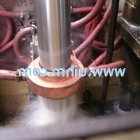
Relationship between induction frequency and quenching depth (hardening depth)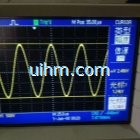
waveform of DSP induction heaters
simulation of Faradays Law from University of Colorado Boulder
optimizing induction welding method for vehicle air conditioner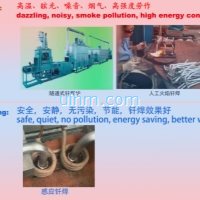
induction welding vehicle air conditioner vs common welding method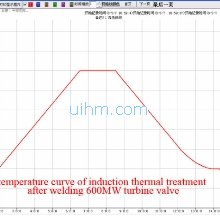
temperature curve of induction thermal treatment after welding 600MW turbine valve
Main Circuit of UM DSP air cooled induction heaters
what is skin effect principle (magnetic force around induction coil)

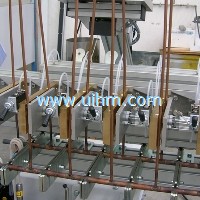
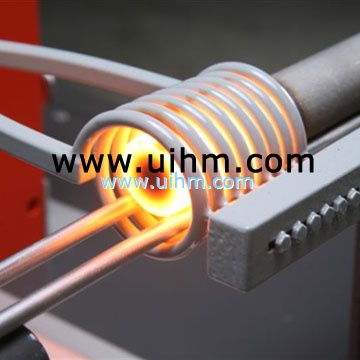
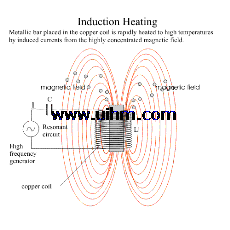


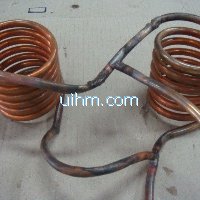

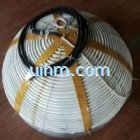
Newest Comment
No Comment
Post Comment